Mizoram – Culture and Tradition
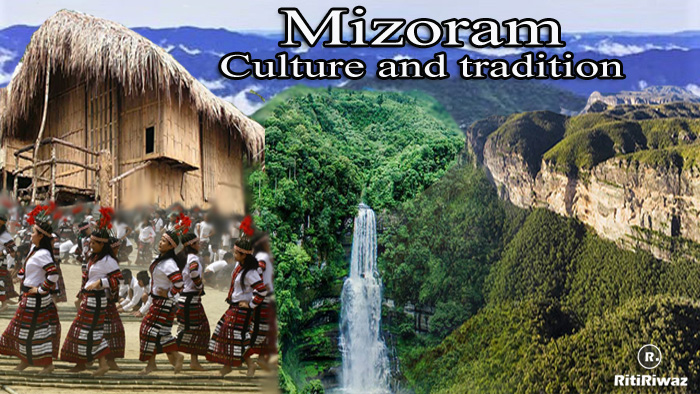
Mizoram is a Northeastern state of India and is famous worldwide for its pleasant weather. This beautiful-looking state is also called the land of mountains because most of Mizoram is surrounded by hills. It borders 2 neighboring countries like Myanmar to the east and south and Bangladesh to the west. The northern part of Mizoram is also surrounded by some of the northeastern states, including the states of Manipur, Assam, and Tripura. Mizoram is famous for its culture and traditions, the tribes living in Mizoram celebrate colorful cultural festivals throughout the year, due to which Mizoram is considered one of the evergreen states.
The word “Mizoram” can be broken into three parts as follows, “mi” means “People”, “zo” means “Hill” and “ram” means “Country”. Thus, Mizoram stands for “Country of the people of Hilly regions”. Aizawl, a mountain town, is a religious and cultural center of Mizoram and also its capital where the major sighting of all kinds of birds and wildlife can be done. Mizoram is famous for the pheasant (Cerameticus hamia).
History
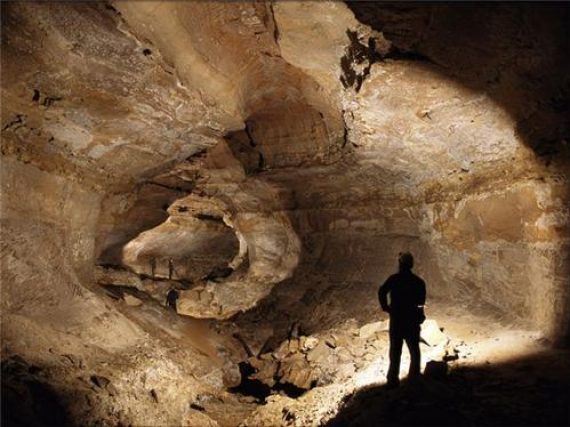
The early history of Mizoram begins with the Mongoloid species. Around the 7th century, people associated with the Mongoloid species reached Burma and neighboring India, China, adjacent to India. Shortly thereafter, when the British missionaries were coming to India in the 9th century, during that time people of Mongoloid species also came in contact with the British missionaries and started living in the hilly areas of India.
After coming in contact with the British missionaries, these people became much better in education and it was the British missionaries who introduced the Mizo language to these people. These tribes of Mongoloid species were the first to come from Burma and India’s neighboring country of China called Kukis. The last tribe in Mizoram came during the 19th century, Which is known as Lushai.
From time to time people of many tribes came to Mizoram. After that, the Mizo community, which was going to settle in Mizoram, was then divided into several castes and sub-castes. These included some of the prominent tribes such as the Lushai, Powai, Paith, Ralte, Pang, Hamar, Kuki, Mara, and Lakhen.
Mizoram was not under British rule until 1890 and was under the leadership of local chiefs. But after 1890, Mizoram also came under British rule. In 1895, many Christian missionaries settled here. Christianity is the main religion in this state due to the settling of Christian missionaries. Mizoram was a part of Assam in the British state and was the headquarters of Aizawl. In 1947, with the independence of India, Mizoram also got independence. After independence, local heads were removed under the 1954 Act.
At that time, Mizoram was not known as Mizoram, but the Lushai Hills region, remained a part of the state of Assam even after independence. But the Mautam famine that came during 1958- 1960 and the demand for the implementation of the Assamese language legislation in all regions of Assam enraged the Mizo people, after which Mizoram became the first Union Territory in 1971, and then by 1987 Mizoram got the 23rd state status.
Culture
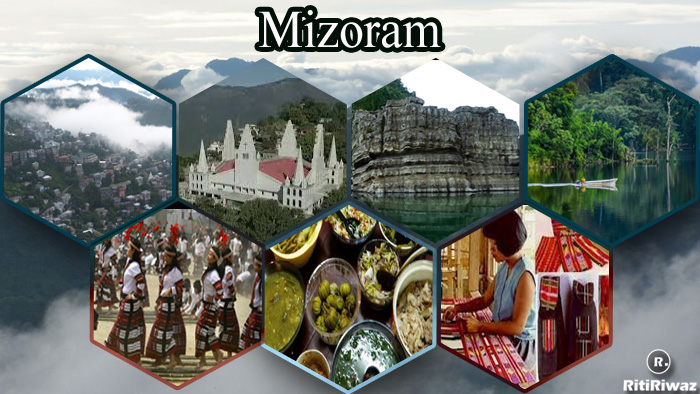
The culture of Mizoram is quite extensive and rich due to the different types of tribes living in Mizoram. It reflects the roots of the Mizos. Known as the “Songbird of the Northeast“, the inhabitants of Mizoram are traditional and simple people still following the technology-free rules today. There are no disparities in Mizoram on the basis of caste and gender. Mizoram is the second least populous state in India.
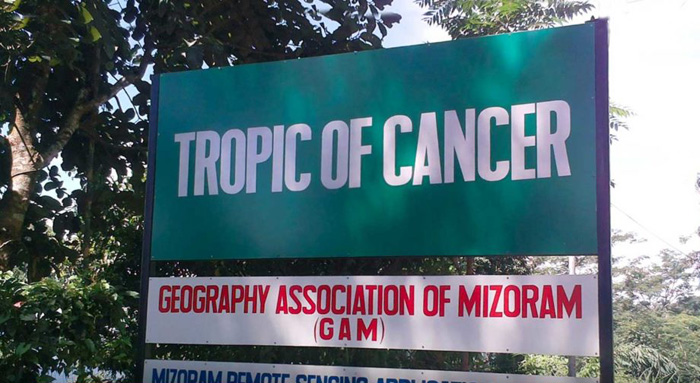
About 86% of Mizoram is surrounded by forests, making Mizoram a biodiversity state. Apart from this, the passing of the Tropic of Cancer from the mountainous region near Mizoram is also a reason for biodiversity. Mizoram is also part of the Seven Sisters groups, which include Assam, Nagaland, Mizoram, Arunachal Pradesh, The states of Manipur, Meghalaya, and Tripura are included. In addition, Mizoram has a literacy rate of over 91 percent, making Mizoram the second-highest literacy state after Kerala.
Marriage among the Mizos has both a religious as well as a social aspect. Marriage brings together not just two individuals, but two families in a network of social obligations. A breach of exogamy, they believe brings disaster to them.
The lives of the people of Mizoram depend on forests, the hunting of birds and animals. Apart from this, the economy of Mizoram is also dependent on agriculture. Jhoom farming in Mizoram is the main source of the life base of the people there. Jhoom farming is quite unique in itself. The people of Mizoram cut forests for jhum cultivation and then grow crops there. The forests on the hills are cut from January to March and left to dry and then the dried trees are burned later. The land is cleared due to fire. After this, small pits are dug on the hillside of the hills. This method of cultivation by burning jugs is called Jhoom farming, which continues in Mizoram even today.
The main crops of Mizoram include crops like rice, maize, sorghum, and millet. Rice is the favorite food of the people of Mizoram. However, due to the lack of suitable land for cultivation in Mizoram, rice production here is not very high and hence the Government of India has to send rice from other states in Mizoram. Maize production is also high in Mizoram. Apart from this, fruits like banana, papaya, orange pineapple, and grapes are also found in Mizoram. Ginger is also very famous in Mizoram. Also, spices like turmeric, chili, and cinnamon are also good in Mizoram. There is also a trend of eating betel leaves in the Mizo society, due to which paan and kaseli are also cultivated here. Mizoram is famous for Jhum Cultivation. Their daily life revolved around agricultural activities. They slash down the jungle, burn the trunks and leaves, and cultivate the land.
Suggested Read: Culture and Tradition of Indian States
Language
In Mizoram, the people of most of the tribes speak the Mizo language. Most of the old people and people from rural areas know fewer languages other than Mizo. With the passage of time, people of young and new generations also know English and Hindi very well. Mizo is the main language of Mizoram.
Religion
The major religion practiced is Christianity. Christian constitutes 87.16% of the Mizoram population in various denominations, predominantly Presbyterian and the church forms an important part of the Mizo culture. Buddhist population of 8.5%, making them the largest minority, followed by Hindus at 2.7%. Muslims make up about 1.3% of the state population. The remaining 3,000 people are Sikhs, Jains, and other religions.
Cuisine
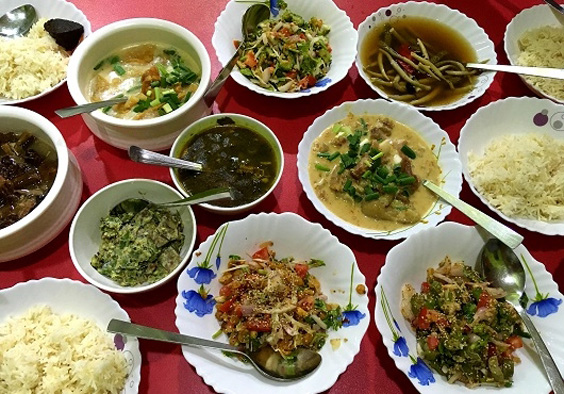
The food of Mizoram can be seen as a mixture of North Indian and Chinese ingredients. The combination of these two makes the food taste unique here. People of Mizoram use mostly non-vegetarian in their food. Along with this, they also use an appropriate amount of vegetables in their food. Food is usually served here on banana leaves, which is the culture of this place. The staple is rice here, and they don’t forget to include fish in their meal. Zero oil or very little oil is used in most of the recipes here.
The main dishes of Mizoram are Bai which is a combination of several herbs cooked with string beans and edible ferns. This Mizoram dish is prepared with Basan’s green copra, cauliflower pieces, chopped potatoes, and rice. It is easily found everywhere during a visit to Mizoram. Rep is smoked meat (fish, chicken, pork, or beef) mixed with flavors of chilies, local herbs, and fresh leafy greens, Chhum han is mixed steamed vegetables, Hmarcha rawt is tangy and spicy chili chutney, Bekang is fermented soya beans.
Apart from these dishes, you have two popular drinks in Mizoram. One of them is ju or local tea. Which they almost like to drink with food. Another is Lubraska grape wine. Which is a favorite drink among the local people. They Don’t have any popular sweets which is popular only in this state but they make Koat pitha which is popular in other northeastern states too.
Suggested Read: Famous Food Of Indian States
Costume
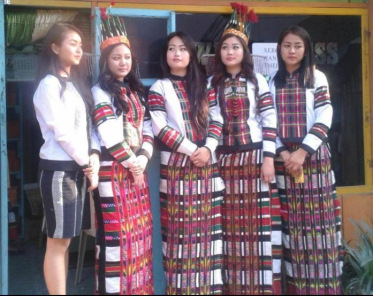
The original garment of the Mizos is known as puan (Puwaan) meaning cloth in the Mizo language is used both by men and women more or less in the same fashion. Puan, apron-like clothing in the shape of a rectangle, is the most important among traditional wears in Mizoram. The weaving of the Puans is done by women on the loin loom. The loin loom is very versatile in the sense that it supports a range of possibilities that can be woven with intricate designs and motifs. Paun occupies a place of pride in a Mizo woman’s wardrobe. These motifs hold traditional and cultural significance to each tribe. The traditional way of wearing Puan is to wrap it around the waist. Modern girls can be seen wearing western blouses with the puan. Puan in a uniform color is called thilchhah. Puanchei is the most colorful costume and is used by every Mizo lady. Kawrchei is a distinctive blouse of the ladies,
Mizo men drape themselves in an almost 7 feet long and 5 wide cloth piece. In the cold season, some additional cloth is used, one on top of the other, along with a white coat, comes down from the throat enveloping the thighs. White and red bands, stuffed with designs adorn the sleeves of these coats. Ngotekherh is a traditional puan worn around the waist originally it was a men’s puan but now it is worn by men and women alike. Hmar am is a small handwoven cloth of handspun cotton and indigo dye. Cyhna Hno is a beautifully embroidered silk puan of the Mara’s, used by both men and women.
Suggested Read: Traditional Dresses Of Indian States
Dance and Music

The Mizo society has been quite famous for its traditional folk dances. These dances have always been a part of the festivals and celebrations of Mizoram. Cheraw, one of the three most important dances of Mizoram, Chonglaizon, and Khoalalam dances is one of the most prominent dances of Mizoram.
The Cheraw dance is the most famous dance of the Mizo tribes. Long bamboos are used in this dance. Apart from this, Chero dance is also called Bamboo dance or Bambu dance. These dances are performed in groups of four people. In which men dance with women. Men hold these bamboos and women are dancing inside it. Women dance to the beat of the drum playing outside.
Chonglaizon dance is performed mainly by the people of the Lai or Pawai tribe. This is a very special kind of dance. During this dance, men and women dance by wearing a traditional Puan or colorful shawl. The belief behind this dance is that it is performed on both occasions of happiness and sorrow.
Khoallam dance is a dance of the guests. People are invited to this dance. Apart – People from different villages also take part in this dance. Here khoal means – guest and lam mean dance. Apart from this, there are other folk dances in Mizoram like Saulkin, Solakai, Chailam, and Paralam, which are organized from time to time.
People of Mizoram are also very fond of music. Their music is very soft and melodious. The guitar is the most prominent instrument used in Mizoram music. Apart from this, people here also use instruments played by drumming, blowing, and String instruments. The music played by instruments includes some of the major music such as Tingtang, Lemlawi, and Tuiumdar. Apart from this, music played by drums also includes music like Talhkhuang, Khuang, Dar, Bengbung, and Sek.
Mizo music, played by the wind, and blows, also has many names. These music include music such as Hnahtum, Mautawtarawl, Rawchhem, and Tumphit. Apart from this, there is some other folk music in Mizoram which is played on different occasions and festivals.
Fairs and Festival
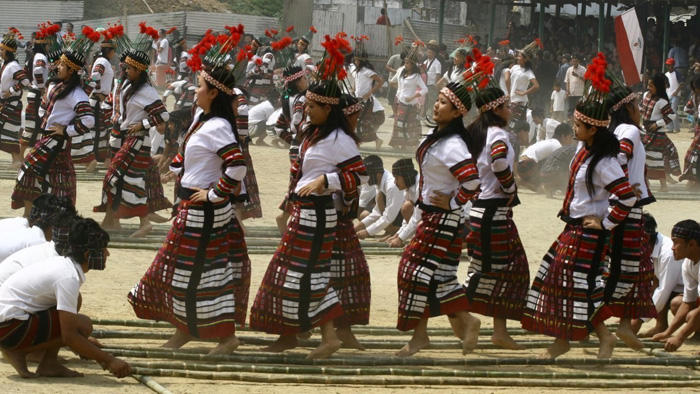
The festivals of Mizoram are grand and full of joy. And together represent the cultural heritage of Mizo. Festivals are celebrated here with great enthusiasm and grandeur. Here, the costumes, traditional dances, and ceremonies form a major part of these festivals. Agriculture plays an important role in the lives of the people of Mizoram. Hence almost all the festivals of Mizoram are focused on agriculture. Which are celebrated on occasions like sowing, harvesting, and the seasonal cycle.
In Mizoram, some festival is celebrated throughout the year. The tribes living here have their own festivals. If you tell us about some of the major festivals of Mizoram, some major festivals like Chapchar Kut, Mim Kut, and Pal Koot are celebrated here.
Chaphar Kutha Festival in Mizoram is celebrated during jhum cultivation. In jhum farming, when the jungles are cut and left to dry for almost a month, the time when the time is available, the Chapchar Koot Festival is celebrated. This Mizo tribe festival lasts for several days. Which people celebrate with great enthusiasm and pomp. The Meemkut Festival is celebrated in the month of July or August after maize cultivation. Mizo people also celebrate this festival with great enthusiasm and sing and dance. The Palkoot Festival is celebrated in the last week of December. The belief behind the Palkut festival is that this festival is celebrated in the prayer of a new harvest coming home and a better life through the grace of God throughout the year. Apart from this, this festival is also associated with the harvesting of straw.
Art and Craft
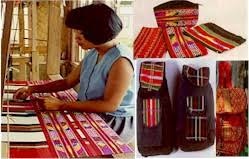
The traditional crafts of Mizoram are weaving, cane, and bamboo work. The Mizo women weave intricate traditional designs and patterns on their looms. Hence handloom is the largest cottage industry in the state. After agriculture, most people are employed in it and are the major source of income, especially for women. Handicrafts of Mizoram comprising of ‘Khumbeu Ceremonial Hat’ made of waterproof wild Hnahthial leaves including other handicrafts products such as shawls, textiles, bags, utensils, flower vases, and fine bamboo furniture. A wide variety of cane and bamboo handicrafts are also available in the markets of Mizoram.
Mizoram is also famous worldwide for its bamboo forests. The people here also produce handcraft quite well. Most of the handcrafts made here are made of bamboo. The handicrafts of Mizoram are so expert in weaving and embroidery that people are forced to buy handicrafts made by them. The handloom industry plays a crucial role in the socio-economic development of the majority of rural masses in the northeastern region.
Famous People
- Zoramthanga: Politician
- T. Sailo: Army Officer
- P. S. Chawngthu: Poet
- Darchhawna: Writer
- Lalsawma: Social Worker
- Laltluangliana Khian: Scholar
Tourism
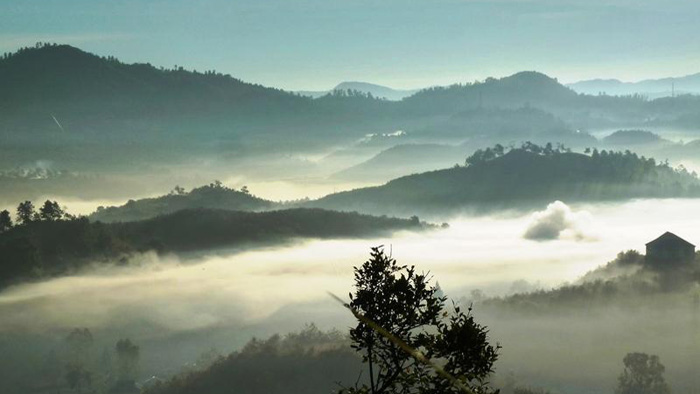
Mizoram is a small state. Therefore there are not many tourist places here. Aizwal city is “The Home of the Highlanders”, with a hallmark of tribal culture. A museum in Aizawl, the capital of this place, is particularly worth visiting here. In this museum, you can see rare items related to the traditional civilization and culture of Mizoram. Apart from this, Bora Bazaar here and Tamdil, the largest lake of Mizoram are also very famous in the tourism of Mizoram. Bora Bazaar and Tamdil Lake.
We also get rare wild buffalo from Mizoram state. A small population of wild elephants and tigers can be seen in the Ngengpui and Dampa Sanctuaries.
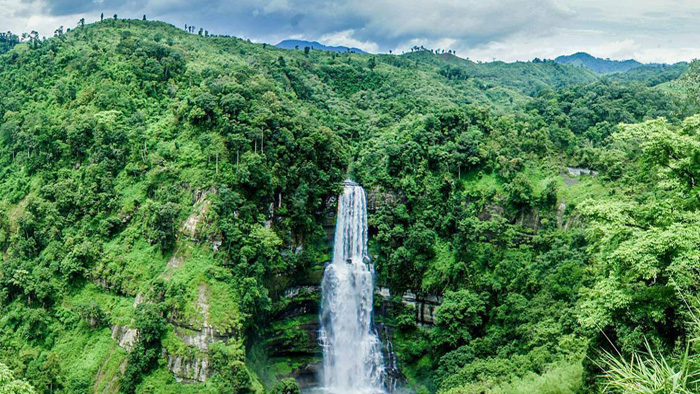
Champhai is a beautiful tourist destination near the border of Myanmar. Tamdil is a natural lake with beautiful forests. It is 40 kilometers from Aizawl and 10 kilometers from the tourist place Saitual. Vantawng Falls is the highest and most beautiful waterfall in Mizoram. It is five kilometers from Thenzawl town. The tourism department has constructed tourist accommodation houses in all major towns in the state and highways and passenger accommodation in other towns. Recreational centers have also been set up at the Alpine Picnic Hut in the District Park near Jobouk and Bero Tlang.






